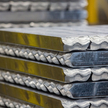Last year, at the Economic Forum in Karpacz, you said that a wave of bankruptcies was coming over the Polish economy, which was due to the debt recovery requests submitted by your clients. At the end of 2022, there were indeed problems. Insolvencies across the economy, especially in the construction industry. What is the situation now?
We are currently past the peak, with the most significant increase in insolvencies and business damages occurring in the first quarter and early second quarter of 2023. We have observed a gradual leveling off of this trend over some time. Insolvencies are maintaining a relatively high (though not exceptionally high) level and are expected to continue in this range. It appears that a period of stabilisation is on the horizon.
It is essential to note that the current situation is reminiscent of the days during the coronavirus pandemic when we witnessed historically low claims and minimal insolvency rates. At one point, the Polish economy was exceptionally liquid. However, we have now returned to the normal pre-pandemic rates and anticipate remaining at this level until the end of the year. The first quarter of 2024 is expected to follow a similar pattern.
Will corporate insolvency stabilise in the coming months?
The situation is already showing signs of stabilisation. We are now primarily documenting isolated, but notably large cases of bankruptcy. The most affected group consists of small and medium-sized enterprises. However, we anticipate this situation to level off by the end of 2023. Nevertheless, occasional spikes in bankruptcies may still occur.
And from the perspective of KUKE’s portfolio, how does the condition of individual industries look like? Where is the situation most difficult? Are you reducing insurance limits to any sector?
The challenging circumstances have had a nearly uniform impact across all industries. However, the construction sector faces more significant hurdles. While our previous concerns were centered around contractors, the current issue pertains to producers of construction materials and related products. They are grappling with the challenge of excess inventory. This surplus is the result of stockpiling based on earlier projections and market conditions, leaving substantial amounts of capital tied up in their stockpiles. This poses a substantial challenge for many companies and is a key contributor to their current difficulties.

























